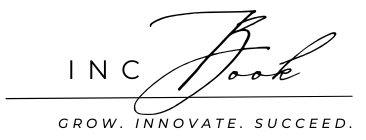Preparing for Business Challenges in 2025 (Summary)
- Key Challenges:
- Economic uncertainty due to inflation and geopolitical tensions.
- Labor shortages and demand for flexible work arrangements.
- Technological disruption from AI and automation advancements.
- Increasing sustainability demands from consumers and regulators.
- Rising cybersecurity threats targeting digital operations.
- Strategies for Success:
- Build financial resilience with cash reserves and diversified revenue streams.
- Invest in technology to improve efficiency and customer engagement.
- Adopt employee-centric policies to attract and retain talent.
- Integrate sustainability into operations for competitive advantage.
- Enhance cybersecurity measures to protect business data.
- Opportunities:
- Expansion into high-growth emerging markets.
- Leveraging tech-driven solutions for industry innovation.
- Sustainability as a means to appeal to eco-conscious consumers.
- Future Outlook: Businesses that prioritize adaptability, innovation, and customer needs will thrive in the evolving 2025 landscape.
As businesses gear up for 2025, the landscape is marked by a combination of opportunities and challenges. Shifts in consumer behavior, technological advancements, and global economic fluctuations are shaping the way companies operate. For entrepreneurs and business leaders, preparing for these challenges is essential to thrive in an increasingly competitive market.
Key Challenges Businesses Face in 2025
- Economic Uncertainty
- Persistent inflation, fluctuating interest rates, and geopolitical tensions continue to create economic instability. Businesses must navigate higher operating costs while managing unpredictable market conditions.
- Talent Acquisition and Retention
- Labor shortages remain a critical challenge, particularly in industries like technology, healthcare, and manufacturing. Employees now prioritize flexible work arrangements, mental health support, and purpose-driven roles.
- Technological Disruption
- Rapid advancements in artificial intelligence (AI), automation, and data analytics are reshaping industries. Companies must adapt to these changes or risk falling behind.
- Sustainability Demands
- Consumers and regulators are increasingly pressuring businesses to adopt sustainable practices, from reducing carbon footprints to sourcing ethically.
- Cybersecurity Threats
- As businesses rely more on digital operations, the risk of cyberattacks grows. Small and medium-sized enterprises (SMEs) are particularly vulnerable.
Strategies to Tackle 2025 Challenges
- Financial Resilience
- Businesses should prioritize building cash reserves and diversifying revenue streams to withstand economic shocks. Proactive budgeting and expense control are essential.
- Investing in Technology
- Embracing automation, AI, and digital tools can improve efficiency, reduce costs, and enhance customer experiences. Startups can leverage low-cost cloud solutions to stay competitive.
- Employee-Centric Policies
- Companies that focus on employee well-being, flexible work options, and career development will attract and retain top talent.
- Sustainability Initiatives
- Businesses should integrate eco-friendly practices into their operations, such as using renewable energy, optimizing supply chains, and minimizing waste.
- Enhanced Cybersecurity Measures
- Investing in robust cybersecurity infrastructure, training employees on digital safety, and adopting zero-trust frameworks are critical to protecting business data.
Opportunities Amid Challenges
- Growth in Emerging Markets
- Businesses can expand into emerging markets with high growth potential, such as Southeast Asia and parts of Africa.
- Tech-Driven Solutions
- Startups focused on solving problems through AI, blockchain, or data analytics will thrive in 2025.
- Sustainability as a Competitive Advantage
- Companies that lead in sustainability will not only meet regulatory requirements but also appeal to eco-conscious consumers.
In 2025, businesses must embrace adaptability and resilience. Those that proactively prepare for challenges—by prioritizing financial stability, leveraging technology, and focusing on employee and customer needs—will be well-positioned to navigate uncertainties and seize opportunities.
The future belongs to businesses that innovate, stay ahead of industry trends, and remain committed to delivering value in an ever-changing landscape.
